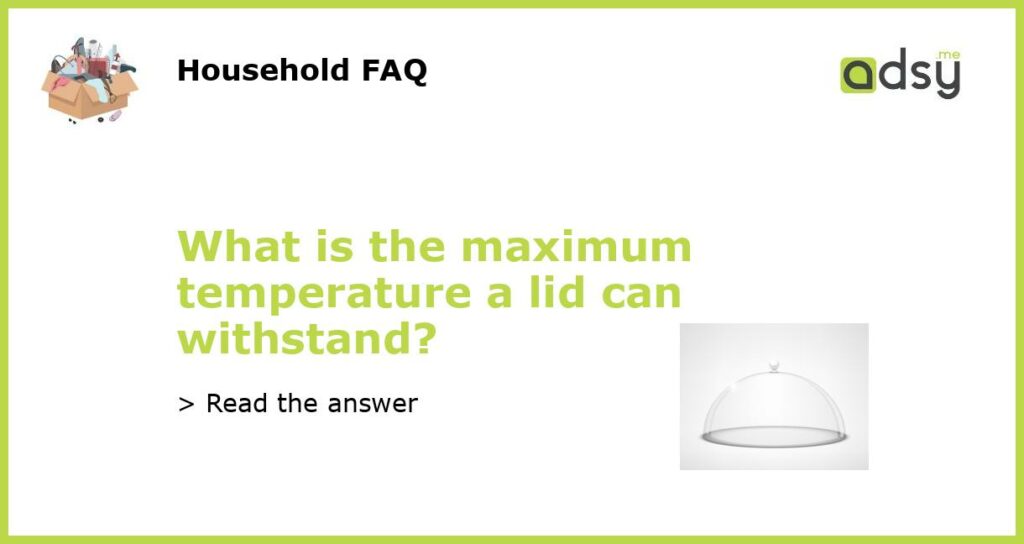The Importance of Knowing the Maximum Temperature a Lid Can Withstand
Have you ever wondered how hot your skillet can get? Or what about the lid you have covering it? Knowing the maximum temperature a lid can withstand is important for a number of reasons.
What Happens When a Lid Cannot Withstand High Temperatures?
If a lid is not designed to withstand high temperatures, it can become damaged or even melt when exposed to extreme heat. This not only ruins the lid, but can also be dangerous if melted plastic or other materials come into contact with food.
Factors That Affect a Lid’s Maximum Temperature
The maximum temperature a lid can withstand depends on a number of factors such as the materials it is made from, the thickness of the lid, and the shape and size of the lid. For example, a glass lid may have a lower maximum temperature than a metal lid.
How to Determine a Lid’s Maximum Temperature
The best way to determine a lid’s maximum temperature is to check the manufacturer’s specifications. This information is typically found on the packaging or on the manufacturer’s website. If this information is not available, it is best to err on the side of caution and assume the lid cannot withstand high temperatures.
Why Knowing a Lid’s Maximum Temperature Matters
Knowing the maximum temperature a lid can withstand is important for ensuring food safety, preventing damage to cookware, and avoiding potential hazards. By checking manufacturer specifications and being cautious when using cookware, you can help ensure that your kitchen is a safe and enjoyable place to cook and dine.






